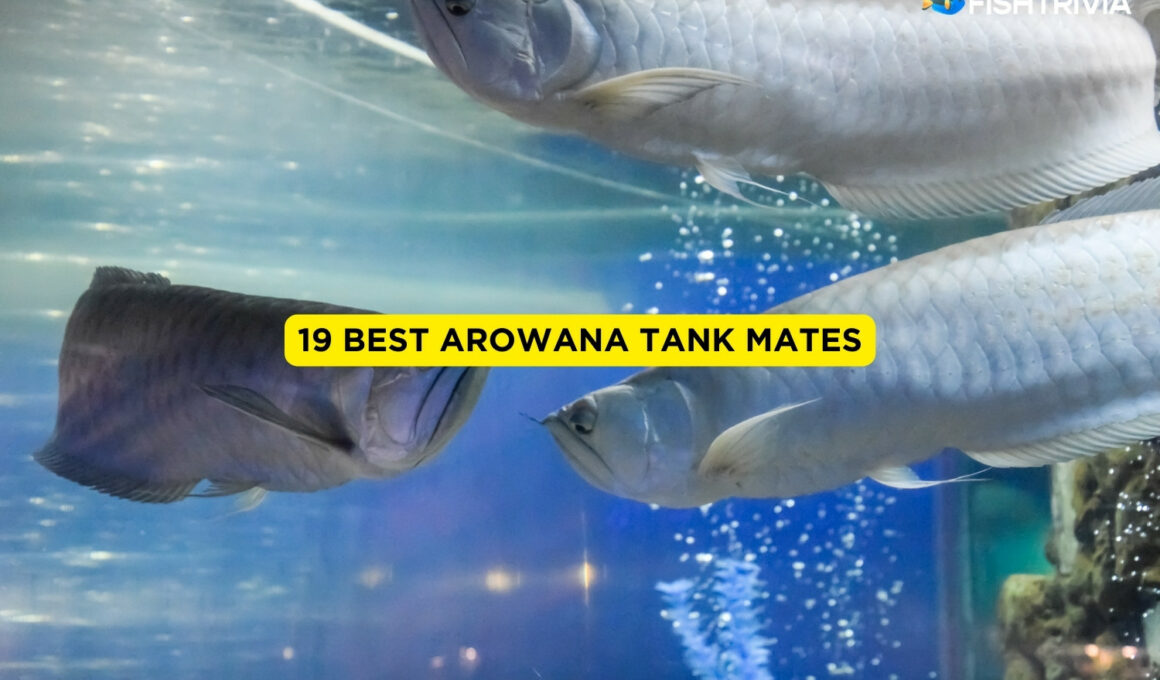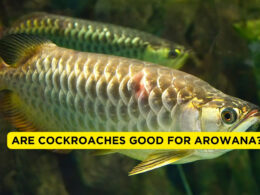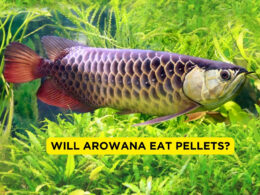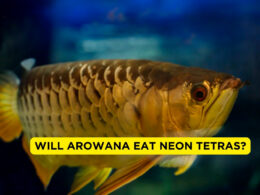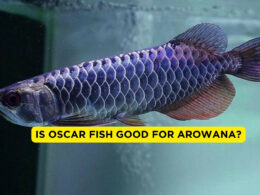In this article Show
Arowanas are fascinating marine animals and are also known as dragonfish. The Arowanas have large scales, a bony tongue, and dark-colored barbells. These prehistoric traits testify that these species have inhabited Earth for so many years, over a hundred million years. The Arowanas may reach up to 48 inches, so you’ll need a spacious tank and the right Arowana tank mates to keep them healthy.
Arowanas are not aggressive in a tank when provided with the right feeding, and they love the tank’s center and upper portions and robust living plants. The Arowanas are only mildly hostile when feeding but normally ignore other tank mates.
They are compatible with cichlids and moderately aggressive fish due to their ability to defend themselves with their strong scales. Arowanas flourish in temperatures ranging from 75 to 83 degrees Fahrenheit and a pH that ranges from 6.0 to 7.0.
Also worth reading;
19 Ideal Arowana Tank Mates
Arowanas are notoriously tough to tank mate in any hobby aquarium. They soon outgrow the majority of fish and will readily consume their previous aquarium mates. Consider the following fish species that will outgrow your Arowana over its lifetime. These are the best Arowana fish tank mates;
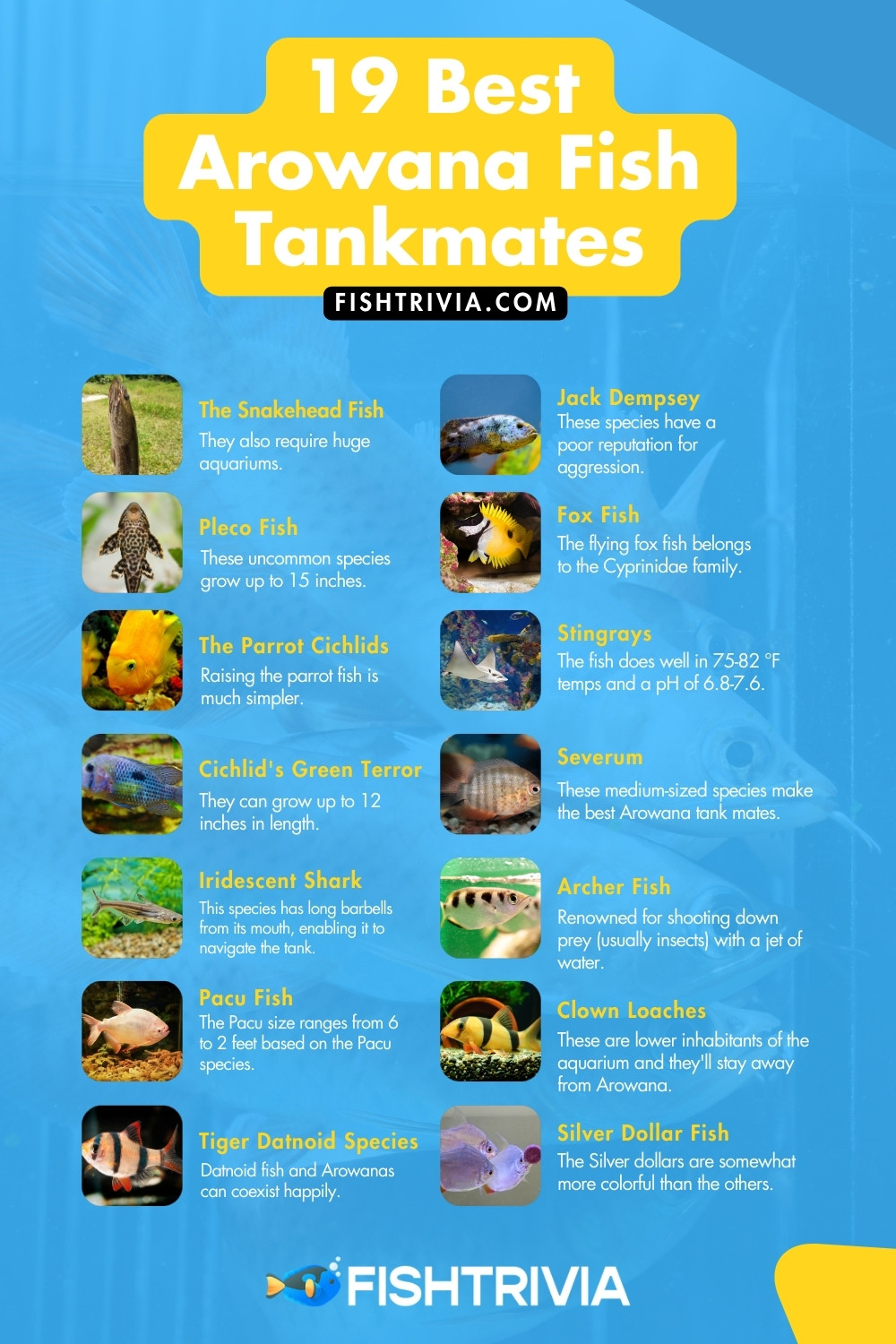
1. The Snakehead Fish
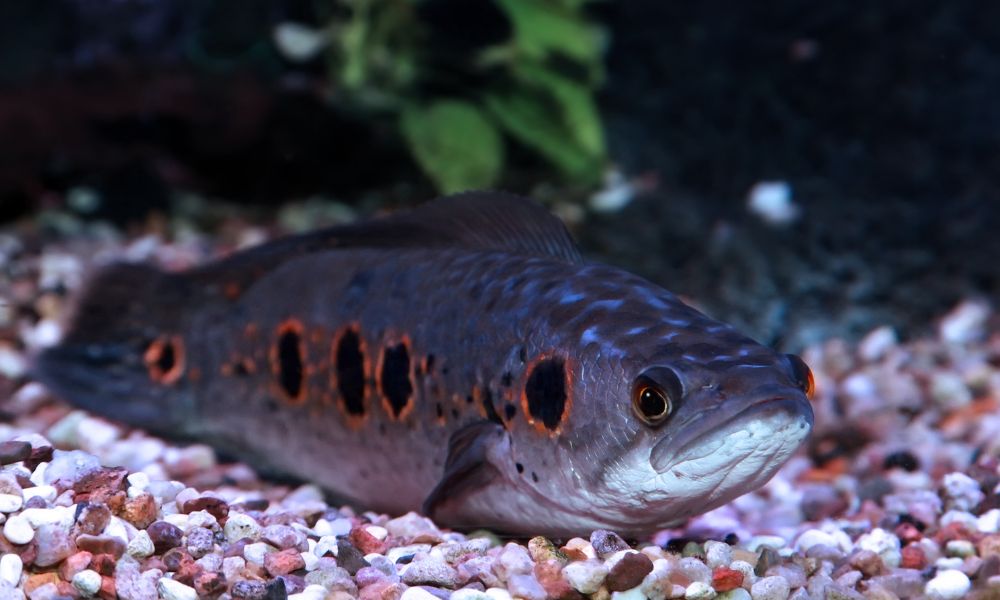
These fish species require huge aquariums just as the Arowanas do; hence they can make good tank mates. As its name suggests, its head and scales look similar to the snake’s. It is capable of surviving in lowly-oxygenated bodies and bodies with thick vegetation.
2. Plecos
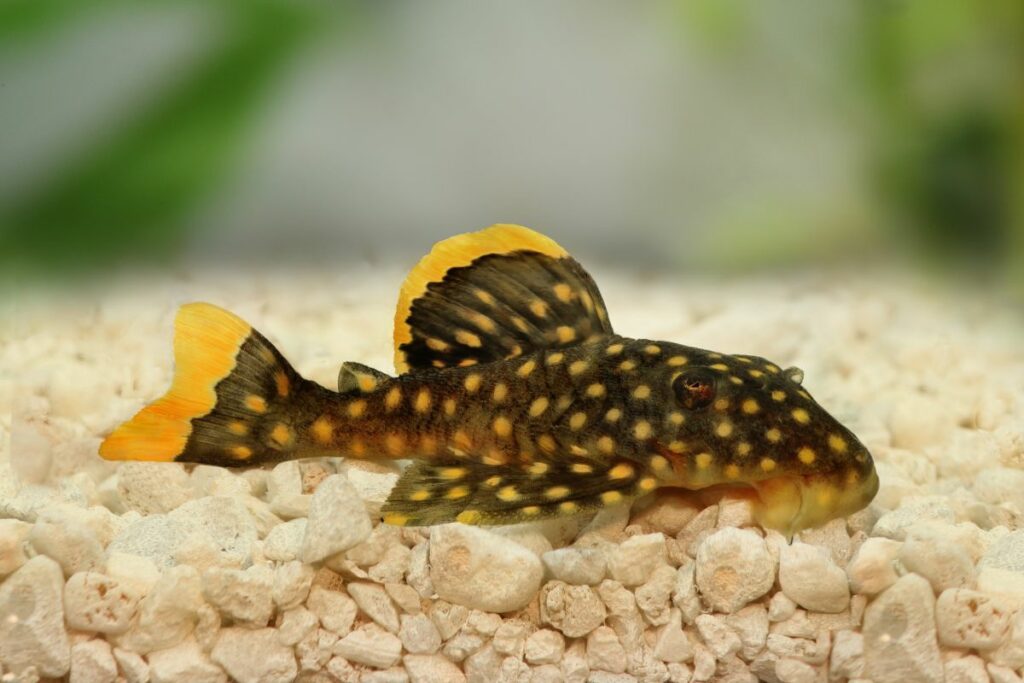
These uncommon species grow up to 15 inches and are mostly found at the bottom of the aquarium. The common Plecos nibble on plants, algae, and driftwood and can also feed on veggies. They mostly get active at night, when they should be fed.
3. The Parrot Cichlids
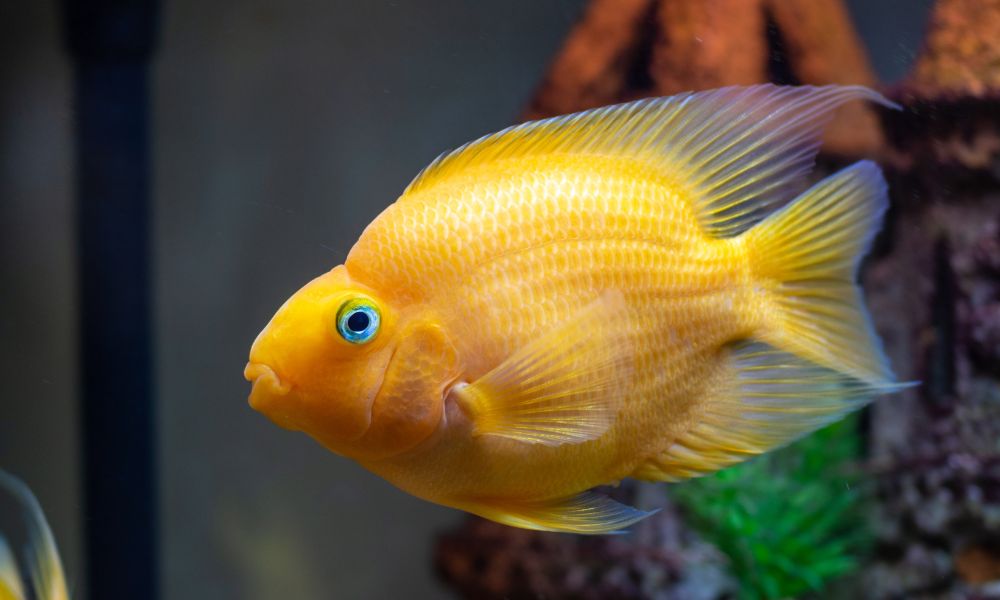
If you’ve previously kept cichlids, raising the Parrotfish will be much simpler. The fish is a relatively recent hybrid produced by crossing two cichlid species from Central America.
They are typically eight inches in length. Parrotfish species are typically vivid orange with minor spots of other colors, such as white.
Parrotfish species are lively tank residents, frequently spotted darting around the water surface of the aquarium.
They will flee for protection as soon as they detect danger; hence, if you decide to rear them, you should supply plenty of hiding places in the aquarium. You can consider investing in a gravel substrate, as they thrive on digging around the ground.
4. Cichlid’s Green Terror
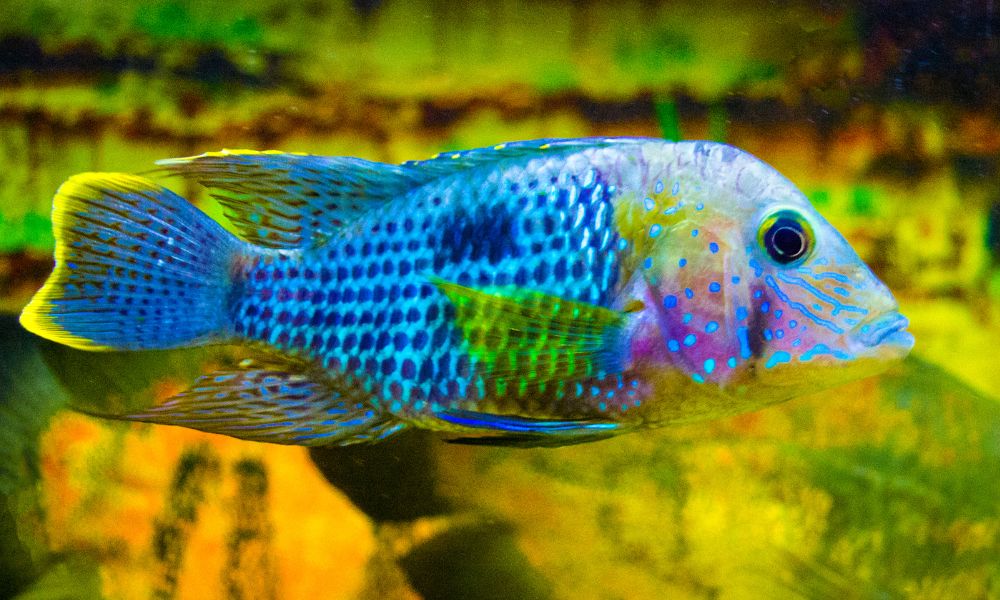
They can grow up to 12 inches in length; for optimal living circumstances, adults would need a 100-gallon aquarium. To catch a glimpse of the cichlid, you can utilize several LED lights and observe their bodily reflections shift from blue-green to a pale green color. They have a tremendous bio-load, and canister filtration is advised for their tanks.
5. Iridescent Shark
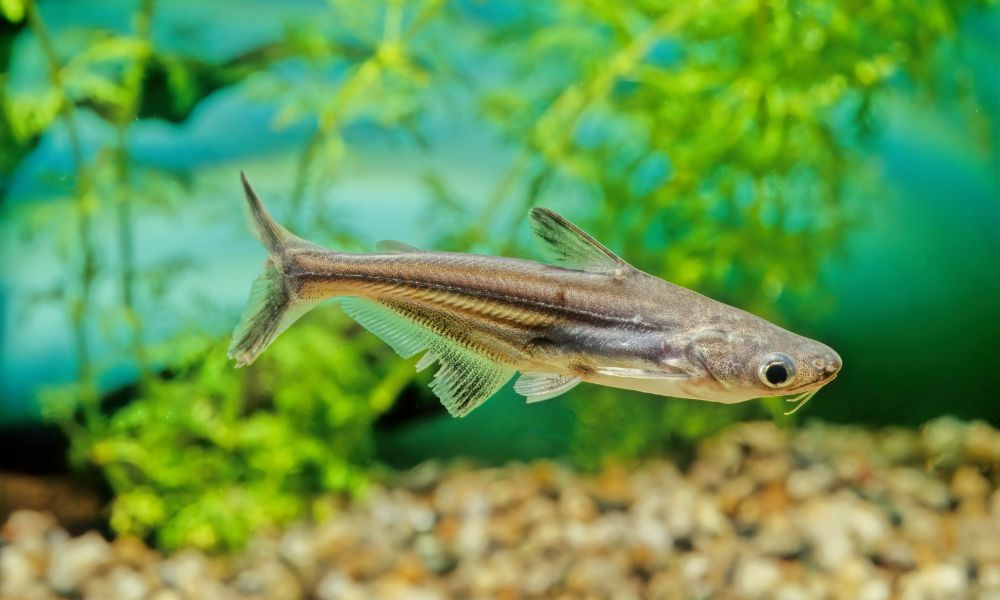
This species has long barbells from its mouth, enabling it to navigate the tank. It is Shiny-grey in appearance, and it mostly swims amid the aquarium. The iridescent shark can grow up to four feet in length and requires a larger tank. Keeping at least four of them in the aquarium is recommended as they are schooling fish species.
6. Pacu Fish
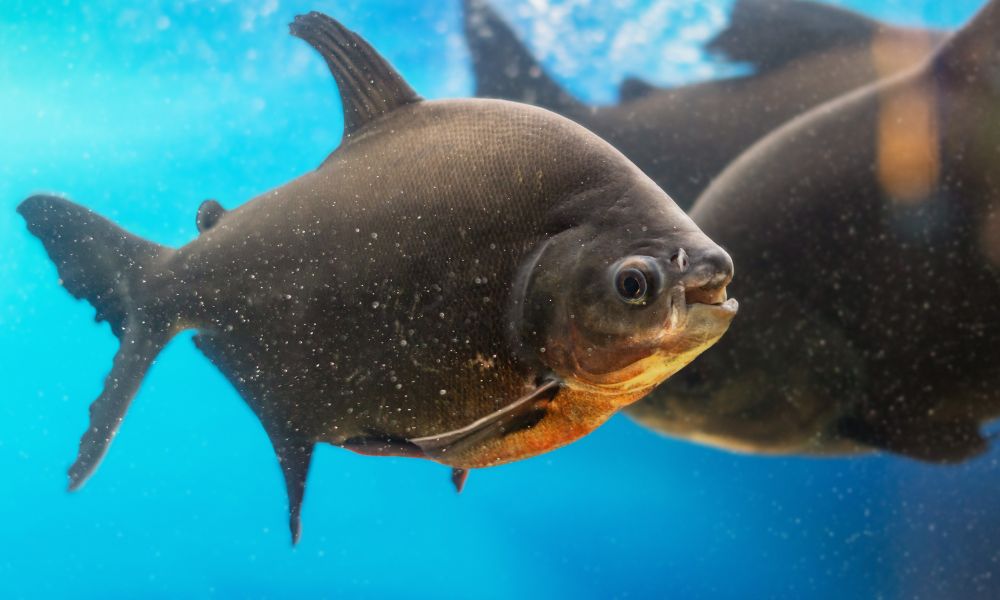
The Pacu size ranges from 6 to 2 feet based on the Pacu species. Temperature ranges of between 76-82 ° F should be provided. Equipping the aquarium with an aquarium heater ensures that these parameters are met.
While young Pacus have shoaling behaviors, most mature Pacus become lonely and thus can be kept solo. The Pacu can clip in fins so that they don’t keep having long, pretty fins.
7. Tiger Datnoid Species
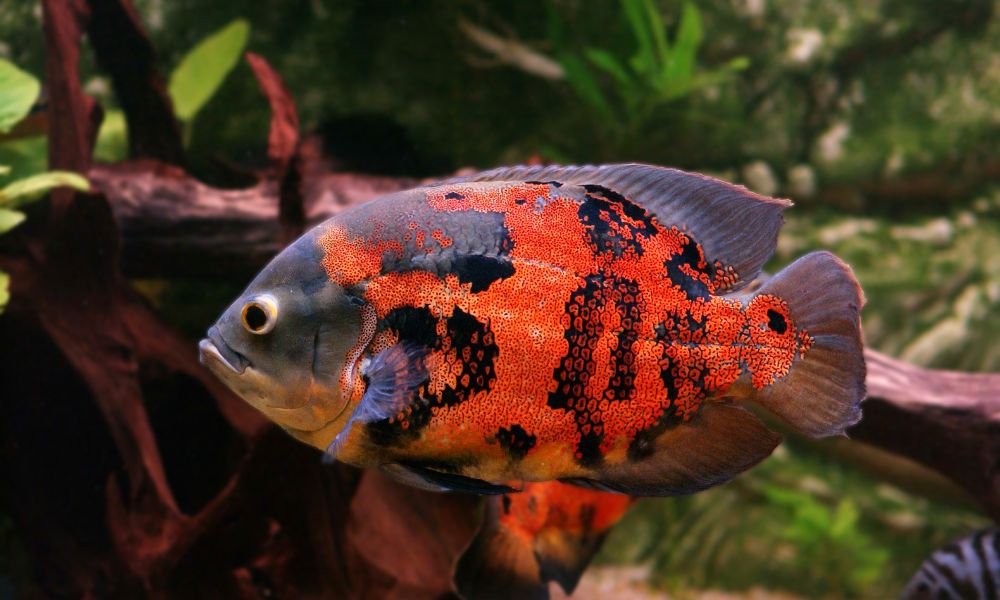
Datnoid fish and Arowanas can coexist happily. It is also known as the tiger fish. Just as its name suggests, it has many streaks that run along the body, usually golden and white.
The tiger Datnoid fish in the wild are fearsome carnivores that hunt tiny fish, crustaceans, and other smaller animals.
Aquarists need to feed live items to appease this predatory inclination, but the fish can be trained to eat pellets and frozen meals. These fish are quite timid, and hence one should provide plenty of hiding areas in your aquarium.
8. Jack Dempsey
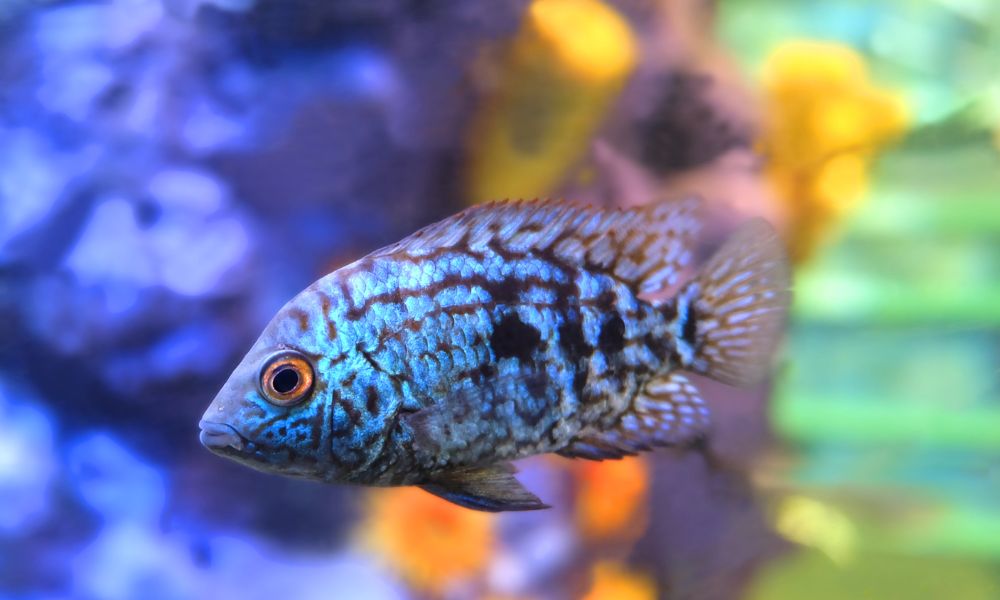
These species have a poor reputation for aggression and are better left to skilled attendants. Jack Dempsey Cichlids usually remain at the lower to middle tank levels. They are 10 to 15 CM long and require at least 80 gallons. The cichlids do not kill living plants and flourish with a sandy substratum.
9. Fox Fish
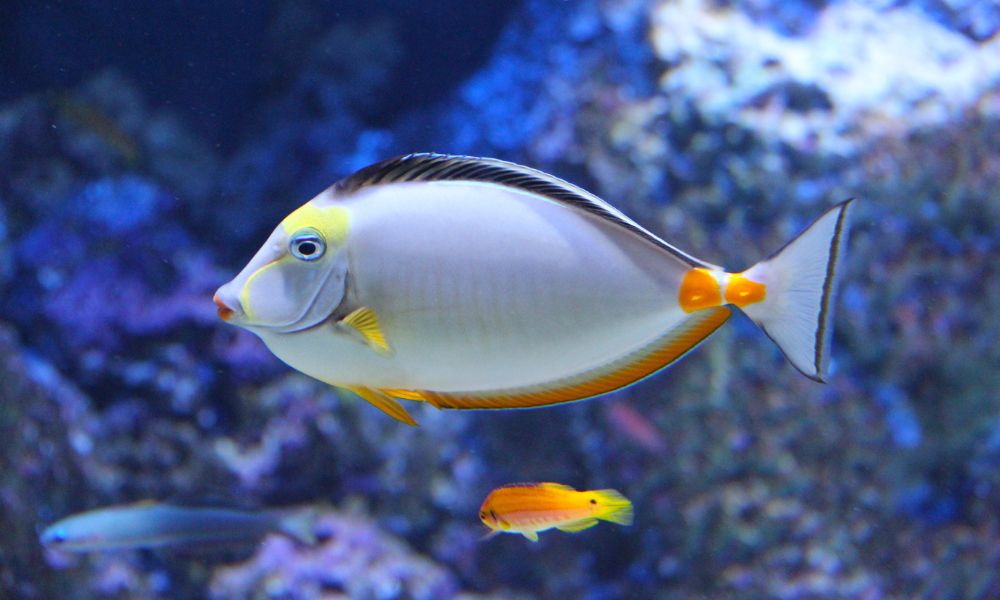
The flying fox fish belongs to the Cyprinidae family. This species can live up to eight years and grow to six inches in the aquarium.
One would need at least a 100-gallon tank to allow sufficient swimming area for the flying foxfish.
Establish the aquarium to imitate a bed in the river using gravel, rocks, roots, driftwood, and plants. Maintain temperatures between 68-78°F and 6-7.5 pH. An omnivorous diet and live and frozen veggies will support the flying fox.
10. The Stingray
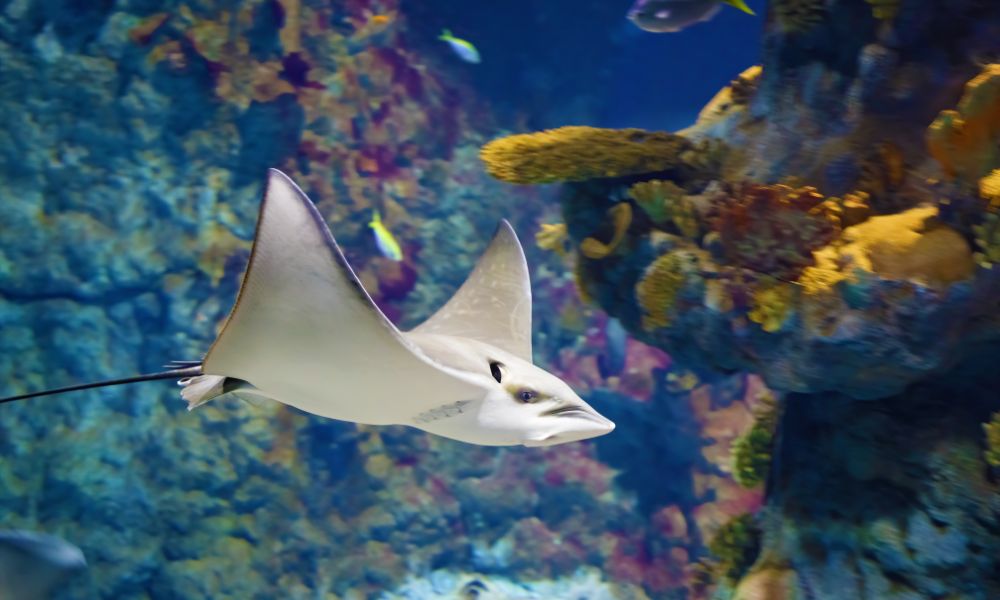
The freshwater stingrays have a deadly barb on their tails for defense in case of danger. They are lower inhabitants, and the fully grown fish require tanks of up to 180 gallons.
They mostly remain in the substratum waiting for food, mainly live food. Use a thin sand substratum to shield the stingray’s body against harm. The fish does well in 75-82 °F temps and a pH of 6.8-7.6.
11. Severum
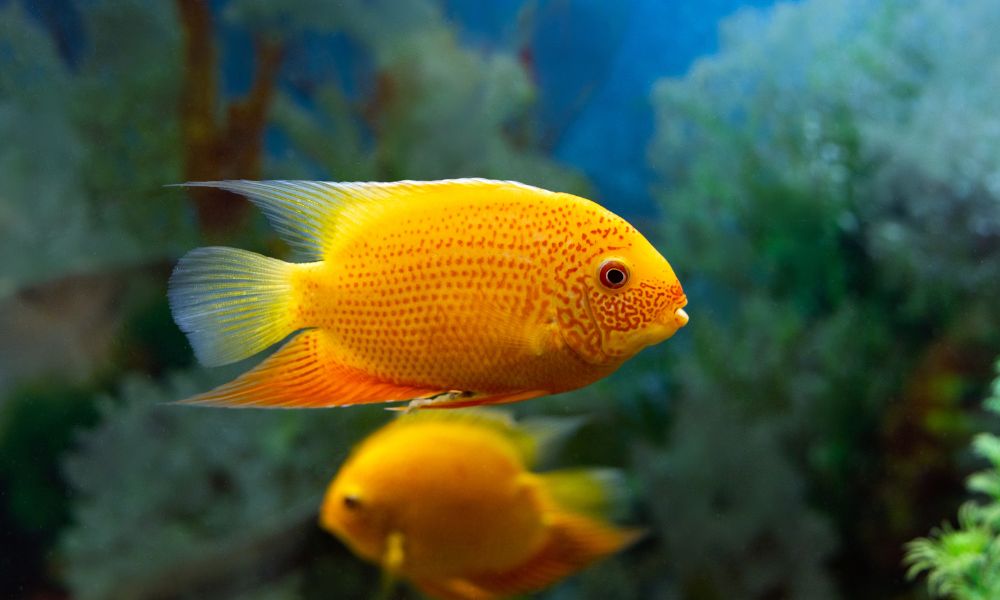
These medium-sized species make the best Arowana tank mate, as the Arowanas cannot feed on them. The Severum are intelligent and can be trained to feed on the Aquarist fingers.
12. Archer Fish
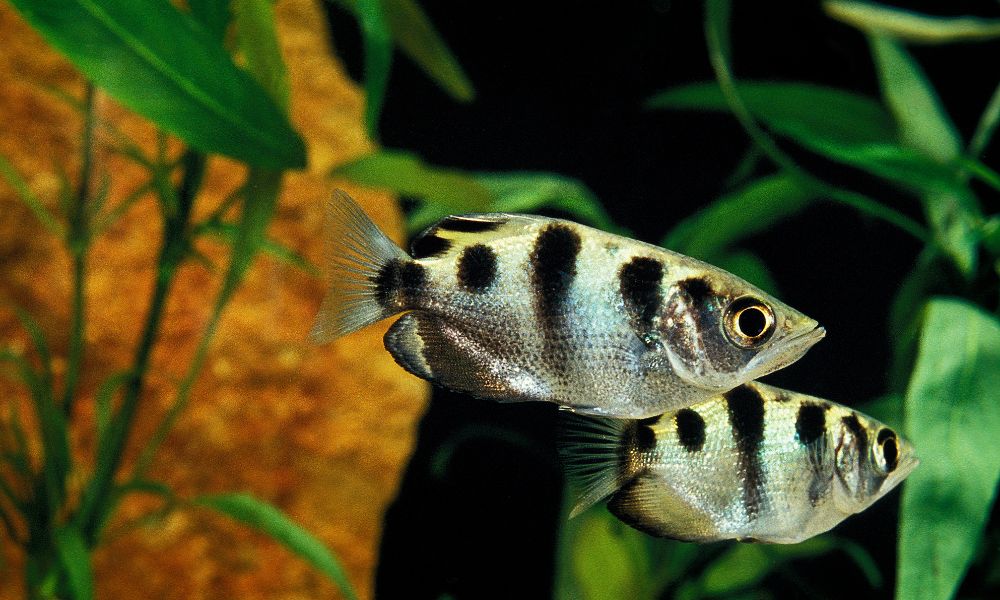
Renowned for shooting down prey (usually insects) with a jet of water, Archer Fish is both interesting and compatible with Arowanas. They predominantly occupy the top part of the water column, much like Arowanas, but are typically non-aggressive.
13. Clown Loaches
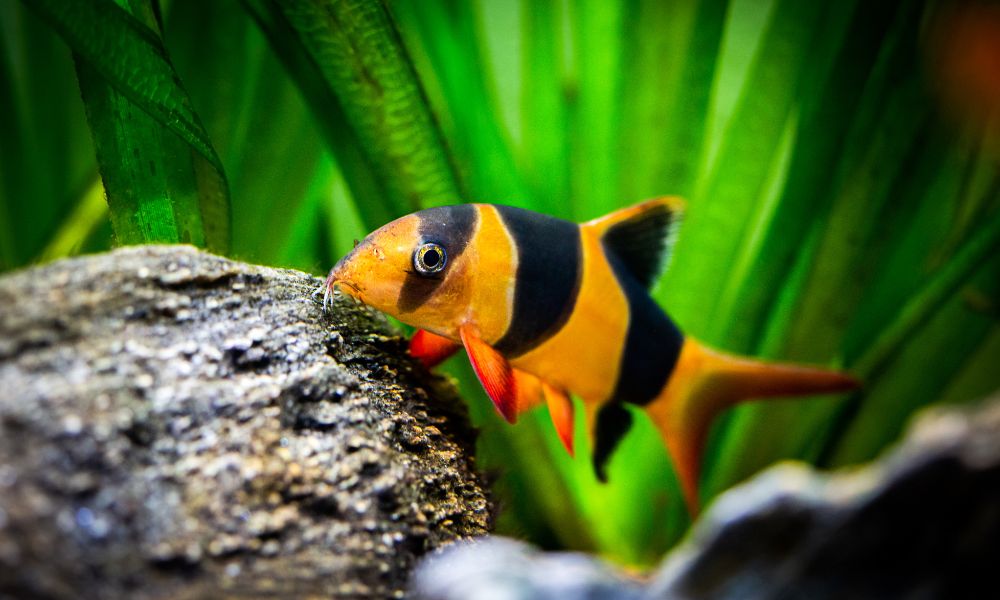
These are lower inhabitants while in the aquarium, and they’ll stay away from Arowana. The Loaches also happily move in large tanks, but at least four or five of them are needed to promote their nature.
The clown loaches are colorful and beautiful swimmers in the aquarium, and they appreciate many hidden niches that can be built with solid plants, rocks, wood, and tunnels.
14. Silver Dollar Fish
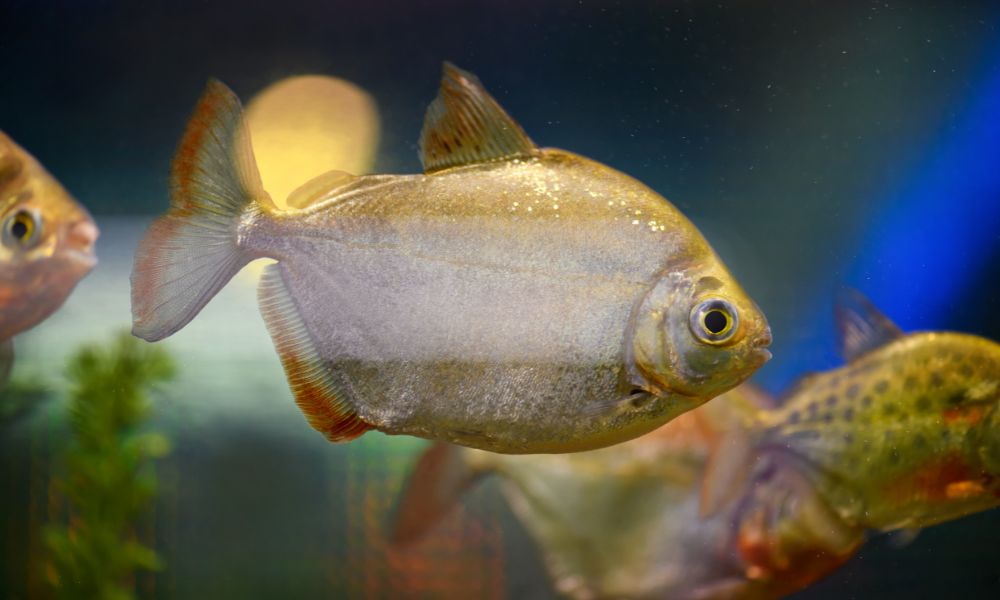
Since Arowanas have a great appetite and wider mouths, Tetras and other fresh fish cannot be used as the Arowana tank mates. Instead, one will need bigger fish such as the Silver Dollar fish.
The Silver dollars are somewhat more colorful than the others, though they are all lovely metallic silver. If you have an aquarium planted for your Silver Dollars, it won’t work well as these fish feed on the vegetation.
They feed on every green plant, including hard, bitter plants such as Anubias. Ensure you stick only with plastic decor and give them plenty of spirulina and white vegetables.
15. Fire Eel
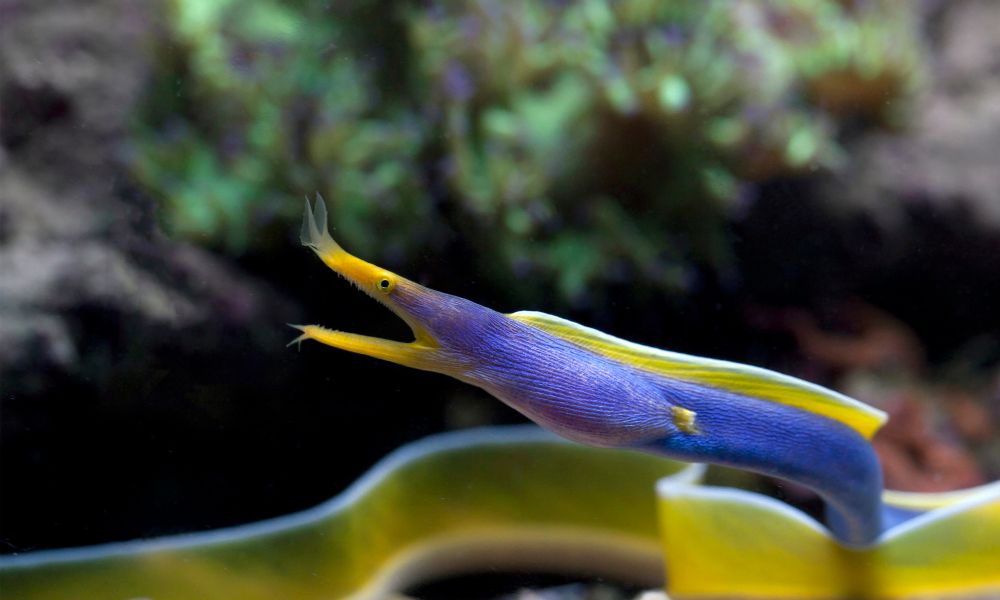
The spiny-like Fire Eels grow up to 3 feet long and usually stay at the bottom of the aquarium. They, however, dart across the entire aquarium in search of food. They should also be provided with a gravel substrate for them to submerge.
16. Oscars

The species have long been a staple for aquarium trading. It is impressive, not and it has an affectionate nature. It is possible to train the Oscars to feed off your finger. Oscars come in various colors, such as Red and Albino.
They grow rapidly enough to catch up with the Arowana, and they are both carnivores. They are particularly long-lived and can reach the age of 15-20 in the appropriate conditions.
17. The Black Ghost Knife Fish
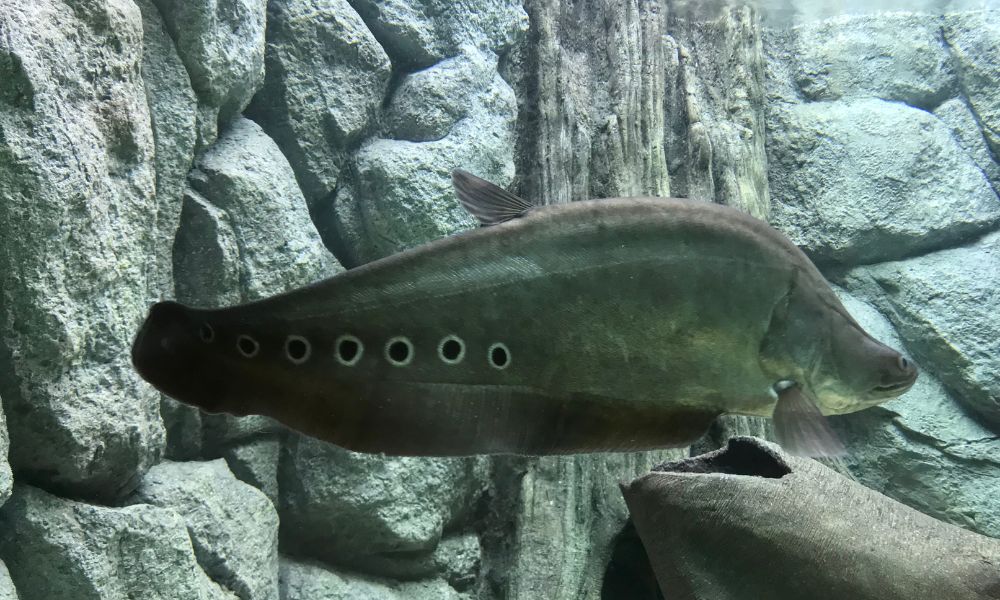
This enormous snake-like lower aquarium dweller is rather shy, especially the evening fish. They need to hide and usually prefer a PVC or a plastic tube to be protected throughout their body.
The piping also probably inhibits some of the electromagnetic stimulation they continually absorb. The knife fish are real electric fish and can speak to each other through electrical signals. These species feed on small fish and worms, such as earthworms.
18. Catfish
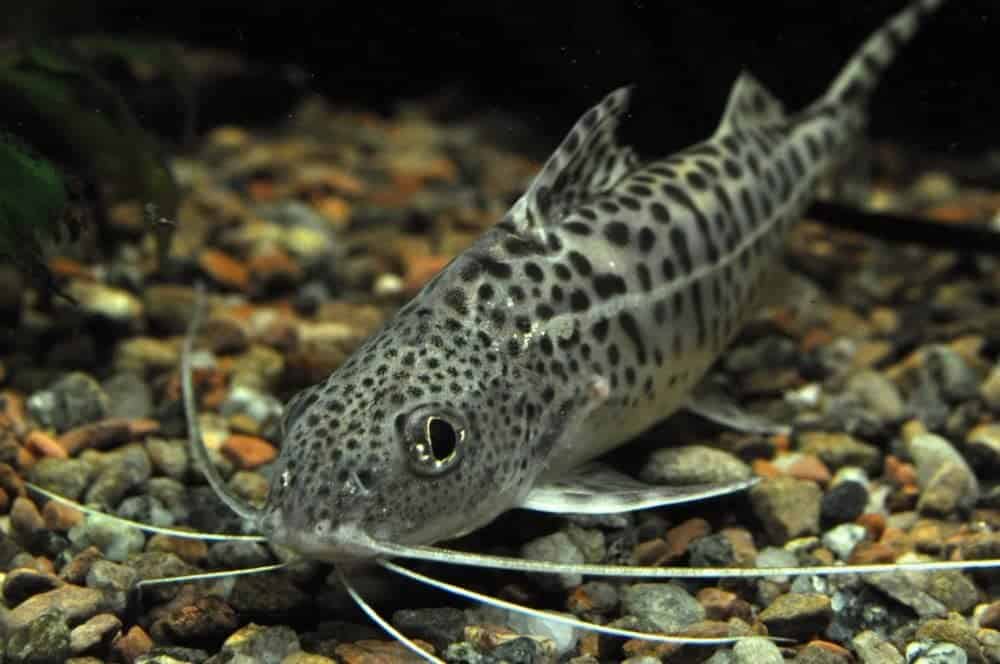
The Arowana and Red Tail catfish species are fast-growing, but the Red Tail catfish have exceptionally wide jaws and grow slightly longer. A large and fully grown Catfish may feed on the Arowana if it does not keep up.
The Catfish, however, feed on goldfish feeders and fresh shrimp. As major predators, specialized formulas with the proper nutrient combination should also be supplied, for instance, Hikari’s Massive Delite.
19. The Bichir Fish
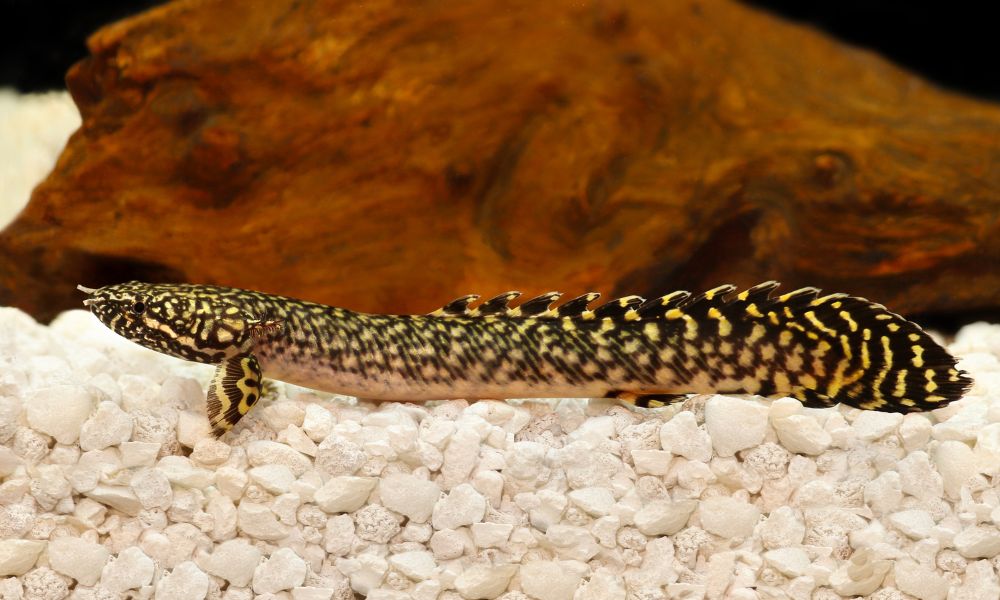
This is a native of Africa and lives in freshwater regions. It consumes live food but can also take pellets and flocks. Bichir fish species are reluctant to get food, and you must be careful to ensure they get fair amounts during the feeding period.
Tips For Introducing New Tank Mates to Arowana Aquarium
Introducing new fish to an established Arowana tank is a delicate process. Done incorrectly, it can lead to stress, aggression, or even loss of your aquatic pets. Fortunately, with careful planning and observation, you can facilitate a smoother transition for all. Here are some tips to ensure a successful introduction:
1. Acclimation Process
Every experienced aquarist knows the importance of proper acclimation, especially when introducing fish to an environment with an apex predator like the Arowana.
Drip Acclimation
This method involves slowly dripping tank water into the container with the new fish over an hour or more. It gradually adjusts the fish to the water parameters of the Arowana tank, minimizing shock.
Temperature Acclimation
Float the bag containing the new fish in the Arowana tank for about 30 minutes. This equalizes the temperature, reducing the risk of temperature-induced stress.
Release
Once acclimated, use a net to transfer the new fish into the tank gently. Avoid adding water from the fish store or transport bag into your aquarium to prevent potential contaminants.
2. Observing Interactions
The first few hours to days after introducing new tank mates are crucial. It’s essential to monitor how your Arowana reacts to its new companions closely.
Initial Curiosity
It’s natural for the Arowana to show interest, even following or examining the newcomers. This is typically harmless curiosity.
Signs of Aggression
Watch out for aggressive chasing, nipping, or cornering behaviors. If these persist, you might need to reconsider the compatibility of the chosen tank mate.
Stress Indicators
Clamped fins, rapid breathing, or hiding for extended periods in new fish might indicate stress. Ensure the environment is comfortable and there aren’t constant conflicts.
3. Adjusting Tank Layout to Minimize Conflicts
The layout of your aquarium can play a significant role in minimizing territorial disputes.
Break Line of Sight
Create natural barriers by incorporating decorations like large rocks, driftwood, or tall plants. This helps reduce confrontations by breaking direct lines of sight.
Establish Territories
Creating distinct areas or “zones” in the tank can help each species establish its territory, reducing the chances of aggressive encounters.
Safe Zones
Ensure there are ample hiding spots for smaller or more timid fish. Caves, dense plantings, or overhangs can provide refuge if the Arowana becomes overly curious.
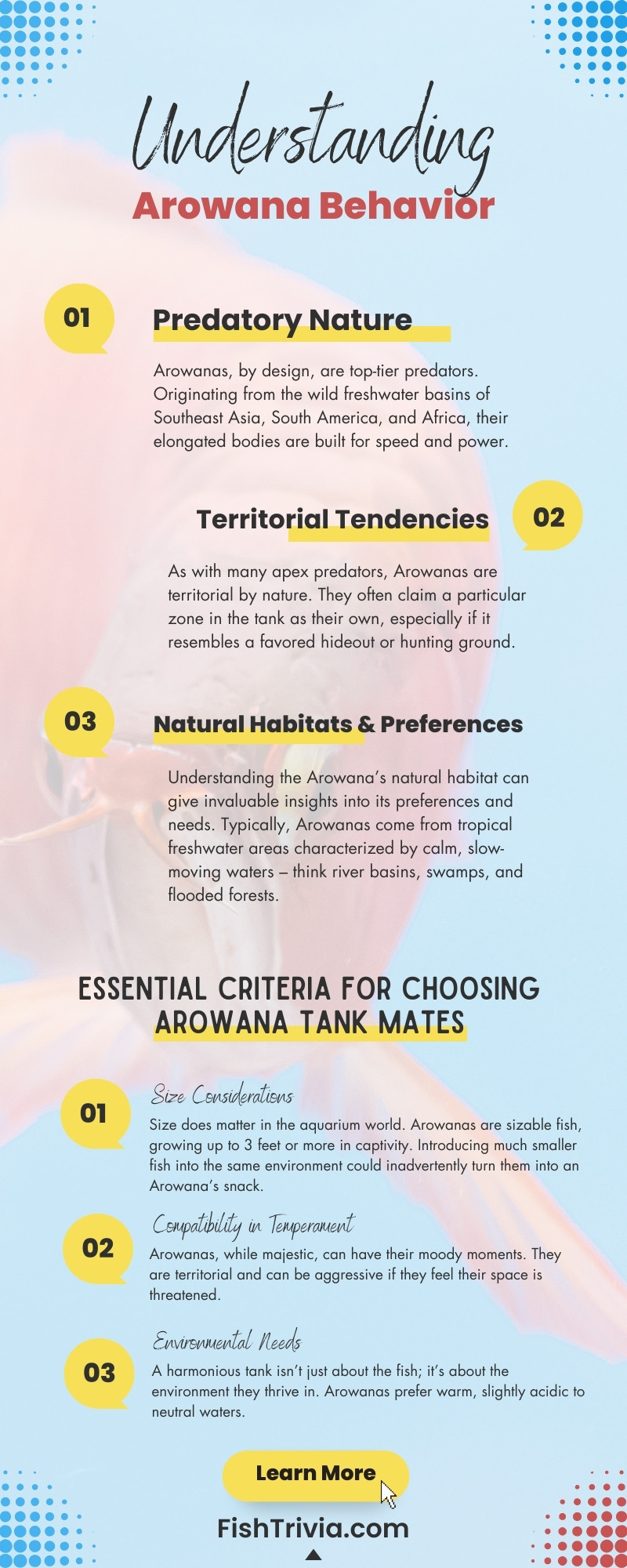
Tank Mates to Avoid for Arowanas
A harmonious aquarium requires careful planning, especially when the centerpiece is an Arowana.
While we’ve touched upon the best companions, it’s equally crucial to understand which species can disrupt the peace or even endanger your Arowana. Here are some tank mates that might not be the best fit:
1. Small Fish and Shrimp
Adding vibrancy and variety to your tank with a school of neon tetras or the shimmering beauty of crystal red shrimps might be tempting, but these choices can be problematic.
Due to the Arowana’s predatory nature, smaller fish and shrimp often become easy targets, seen more as a snack than a neighbor. This not only upsets the balance in the tank but also means you might be waving goodbye to some of your smaller aquatic pets shortly after introducing them.
2. Overly Aggressive Species
While Arowanas are semi-aggressive and territorial, they can be outmatched or stressed by some of the more aggressive fish species. Fish like the Red Devil Cichlid, Jaguar Cichlid, or aggressive types of catfish might continuously challenge the Arowana for dominance.
This can lead to physical harm, constant chases, and an environment of stress, which is detrimental to the health of all the tank’s inhabitants. It’s always a good rule of thumb to avoid pairing top-tier aggressive fish with your Arowana.
3. Fish Requiring Drastically Different Environments
Arowanas thrive in warm waters with slightly acidic to neutral pH levels. Introducing fish that require significantly different conditions can lead to complications. For instance, many cold-water species or fish that need highly alkaline conditions will not only struggle to adapt but might also impact the health of the Arowana.
Ensuring that all fish in the tank have overlapping environmental requirements is essential. This makes maintenance more manageable and ensures the well-being of every creature in your care.






